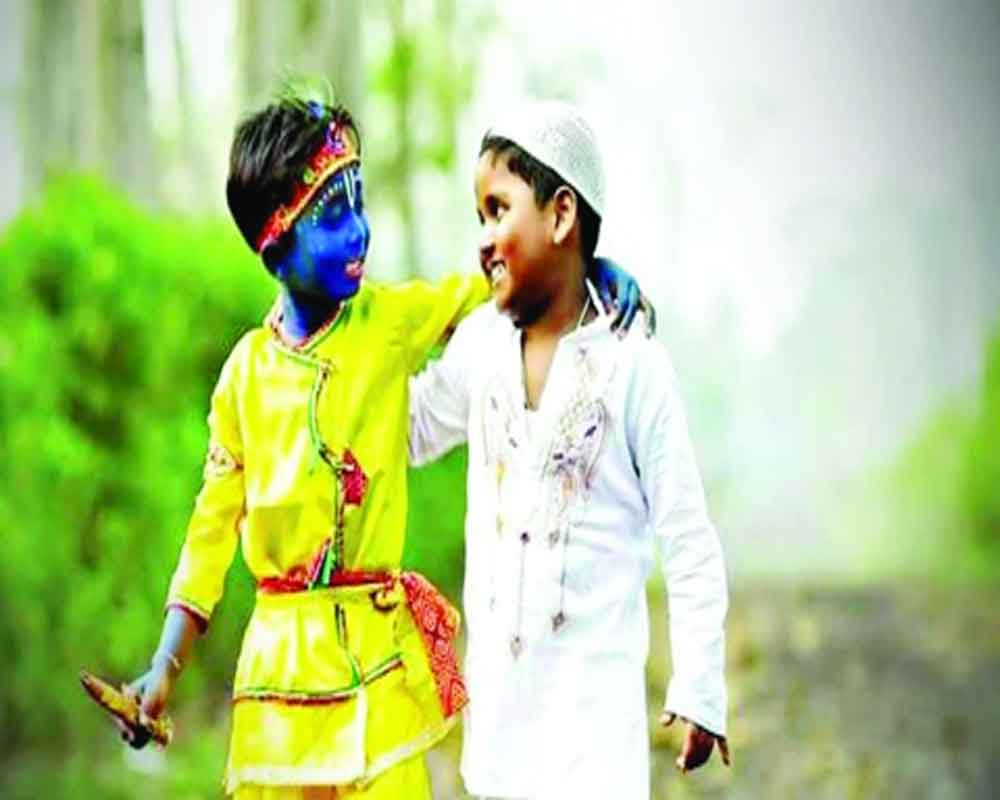The historic consecration of Ram temple in Ayodhya signifies not just a momentous event but a call for reconciliation
Every battle must end, so must every dispute. Killings are more easily forgotten than the destruction of buildings. But when a residence of the divine is destroyed, it is unforgettable. For a Hindu, a mandir is a residence of God. The reason is that an elevated human soul either meets the divine or obtains a glimpse of Him as Ramakrishna Paramahansa did. This is very different from a synagogue, church or mosque, all of which are merely prayer halls. Their respective faiths and adherents do not consider them to be residences of the divine.
January 22, 2024 is now behind us. It has been an epoch-making day, led by the man who made it possible. The Prime Minister's consecration of Shri Ram Lalla at Ayodhya marked the return of Lord Rama to his abode on earth after 500 years of not only waiting, but ceaseless struggle and sacrifices. Ever since Mughal invader Babar's henchman Mir Baqi destroyed the original temple at Ayodhya in 1528 AD, Hindus never gave up the struggle to reclaim the birthplace of Rama. The history of battles waged by the Hindu faithful is a long one, but December 6, 1992 was the day when the edifice known as Babri Masjid was sent to the dust. But, as our Prime Minister has said, now is perhaps the time for reconciliation.
The Somnath Temple at PrabhasPatan near Veraval (Gujarat) was destroyed by the Turkic marauder Mahmud of Ghazni in 1026 A.D. Even after a thousand years later, the devilish crime has not faded from Hindu memory. Thereafter, of course, several thousand temples have been demolished or desecrated. By European traditions and the way they have conducted their politics, the dispute over these desecrations and loss caused should have been settled before New Delhi agreed to part with the share of pre-1947 India's assets to Pakistan at the time of Partition. Unfortunately, nothing was done. Instead, more temples were destroyed even in the Kashmir Valley, where India ruled.
Three-quarters of a century have since passed. Surely, it is beyond time that the issue should be settled and a reconciliation and a reconciliation achieved, if the two communities are expected to coexist cordially in the same country. The question is: what is the gesture required to bring about such a reconciliation?
Very broadly, the desecrated temples can be divided into two categories. Until the period of the Lodi Sultanate, which began from 1451 onwards, and the spread of its rule over certain regions of northern India, Islamic invaders intruding into the country were not accompanied or followed by their architects. The pre-Lodi Muslim sultans therefore, converted temples into mosques readily by smashing the edifice along with the moortis (idols) inside the sanctum sanctorum, and replacing them with mehrabs (a niche in a mosque, which indicates the qibla, the direction of the Kaaba in Mecca) to face Mecca and a minbar (pulpit) of steps, whereupon the imam stands every Friday to deliver his khutba (Islamic sermon).
Many temples were broken down and converted into such mosques. A prominent example of such a conversion is the Dhai Din kaJhopra, which stands at about a furlong's distance from the popular Ajmer Sharif dargah. The odd name signifies that this particular conversion was effected within sixty hours of the desecration of the original Hindu place of worship, because ShahbuddinGhori was in a hurry to pray on his return journey via Ajmer. His slave QutbuddinAibak obediently had the conversion executed within two and a half days for his master and badshah to pray when he returned. The erstwhile temple had actually been a complex of three temples, which were promptly combined and converted into a mosque-like edifice. It is therefore, even now, in a condition to be reconverted into a temple, almost equally quickly.
There would be about 200 to 300 such converted and re-convertible edifices. They could be returned to Hindu institutions, while the thousands of recycled ones could be left alone, as a gesture for the process of reconciliation. These were the temples that were broken down almost to the plinth level and reconstructed with the debris being utilized in such reconstruction. The reconstruction using the same debris was done in Islamic style. These are present in the country by the thousands, with 3,000 of them having been catalogued after being identified either with documentary evidence and/or epigraphs.
These latter structures could be left alone with an apology for having reduced them to such a state, along with an undertaking that such criminal acts shall not be repeated. An undertaking must also be given that the restored temples handed over o Hindu institutions and bodies will be given away irrevocably, and no claim on them whatsoever shall ever be made in the future.
Other issues too, will inevitably come up. As part of the process of reconciliation, issues such as the uniform civil code-which are part of the Constitution of India, but as a Directive Principle-should be dealt with suitably. So also should the issue of the outdated and debilitating waqf, called a "dead hand" by a former chancellor A.A.A. Fyzee. The intention must be to not keep pending any ongoing irritant between the two communities. Let peace and goodwill prevail.
(The writer is a well-known columnist, an author and a former member of the Rajya Sabha. The views expressed are personal)


























